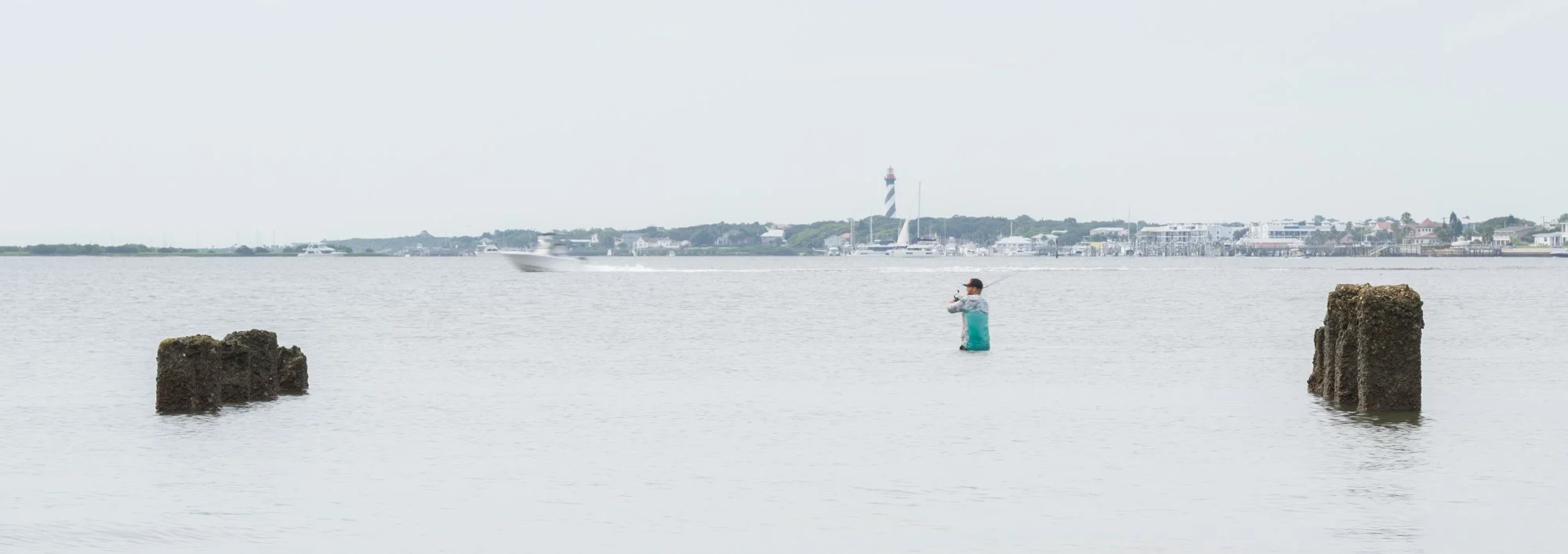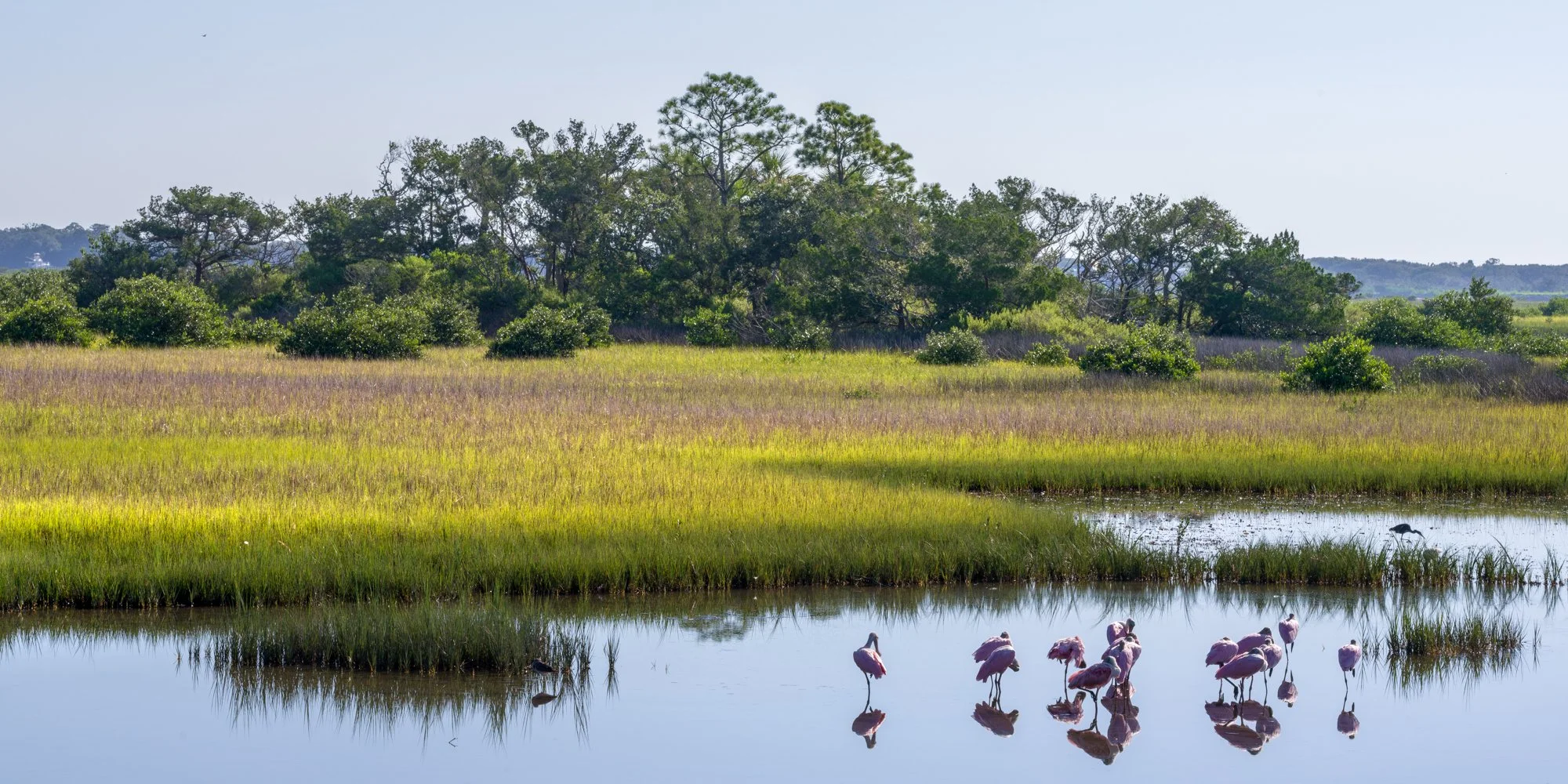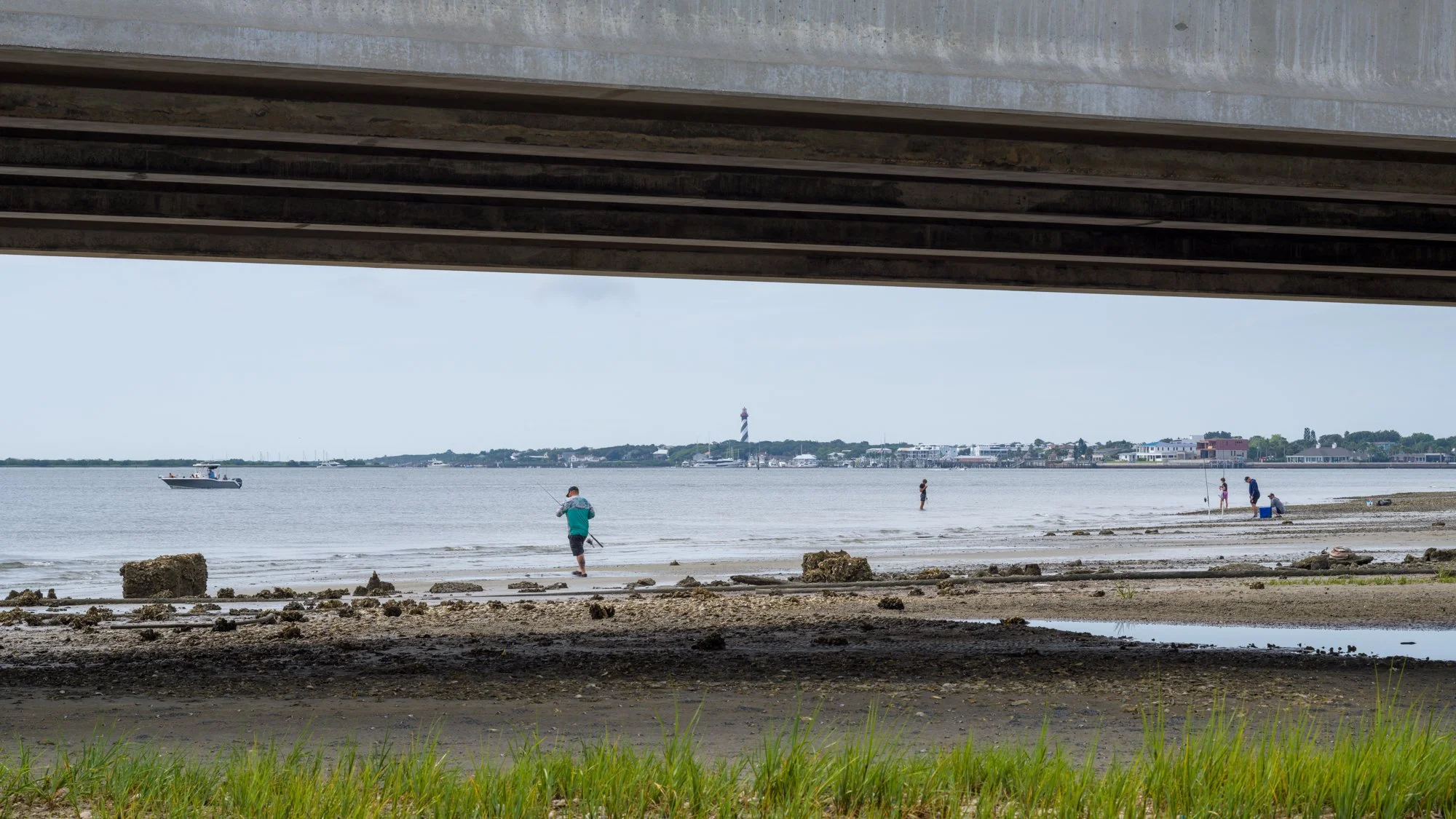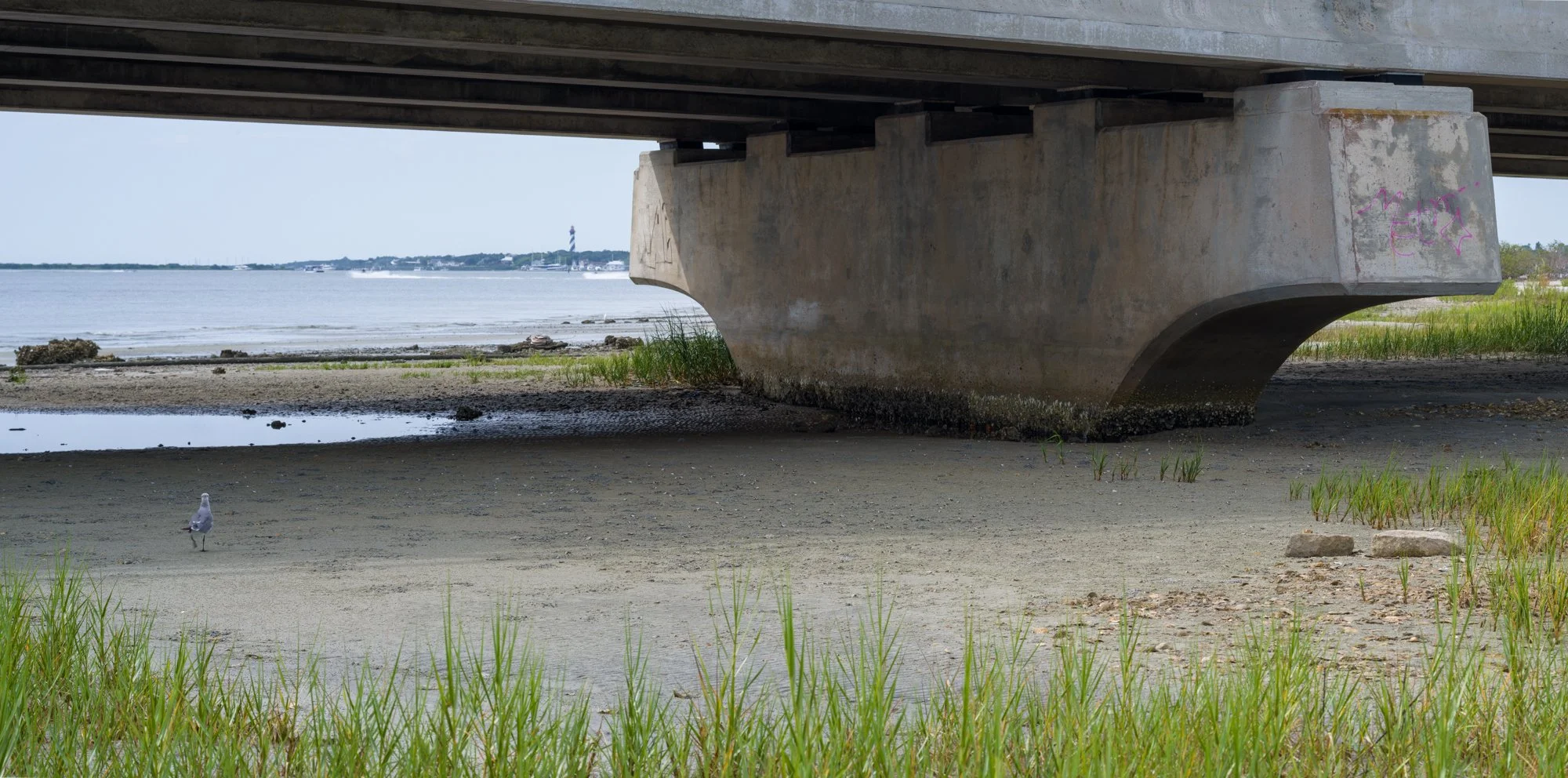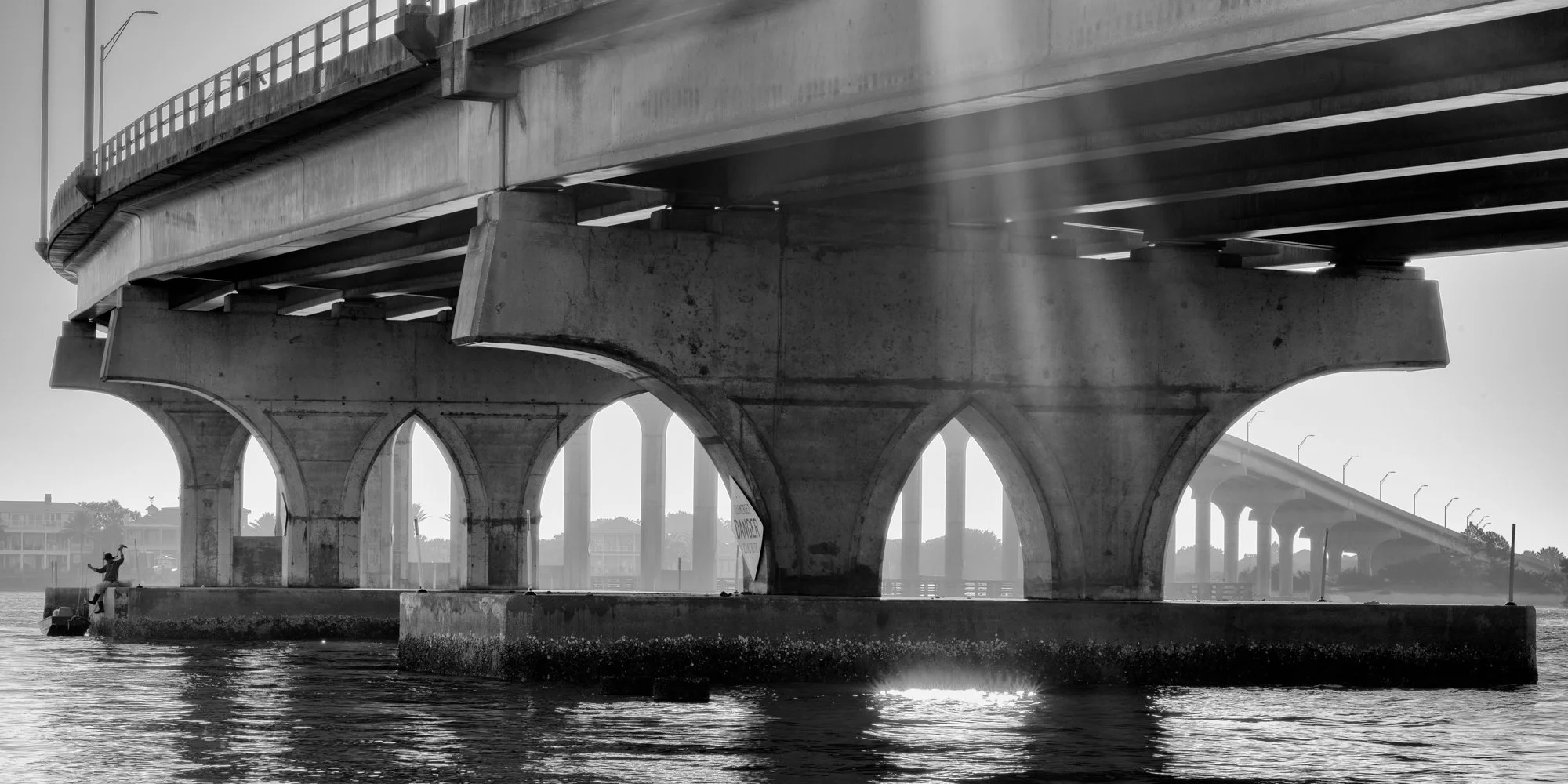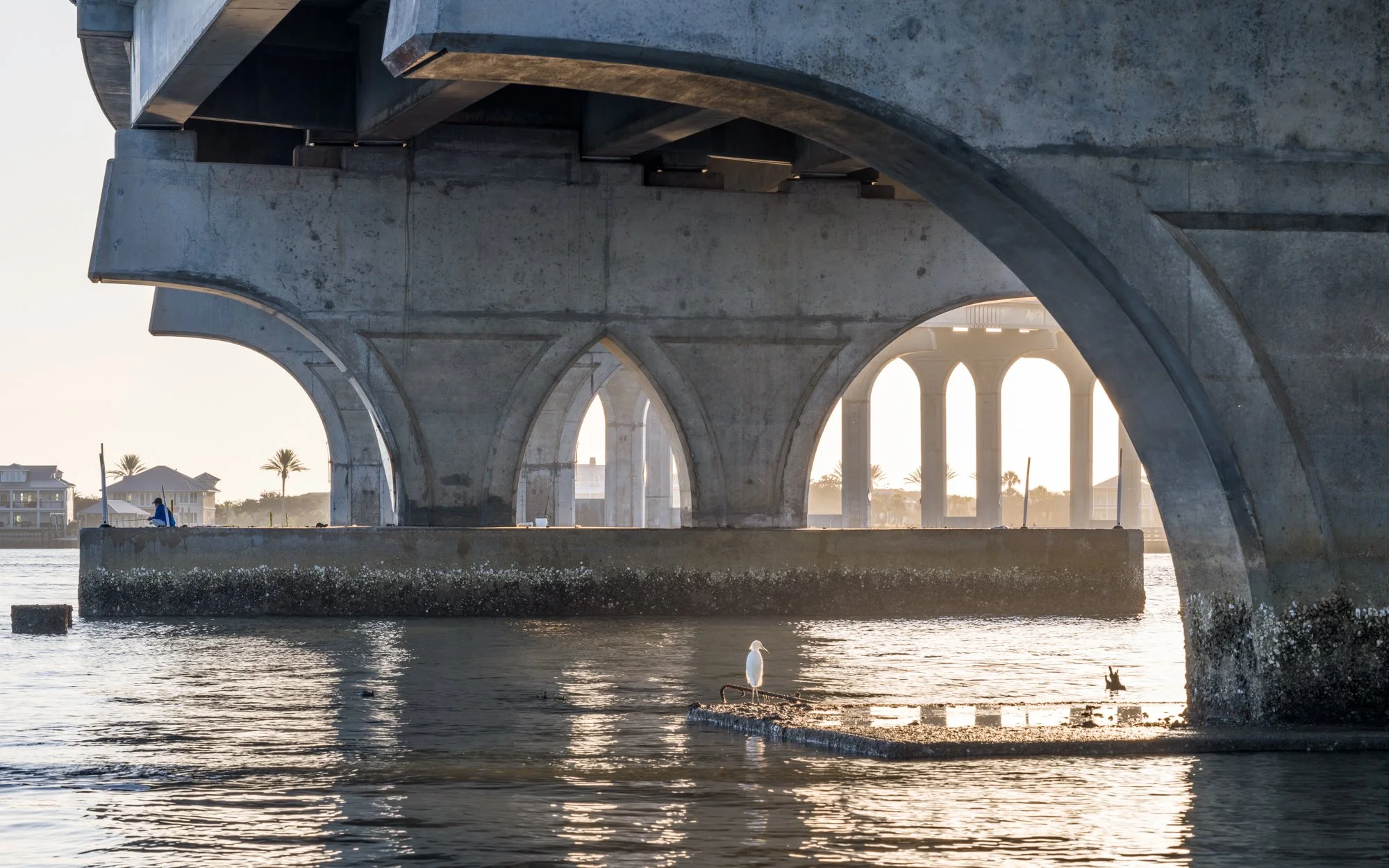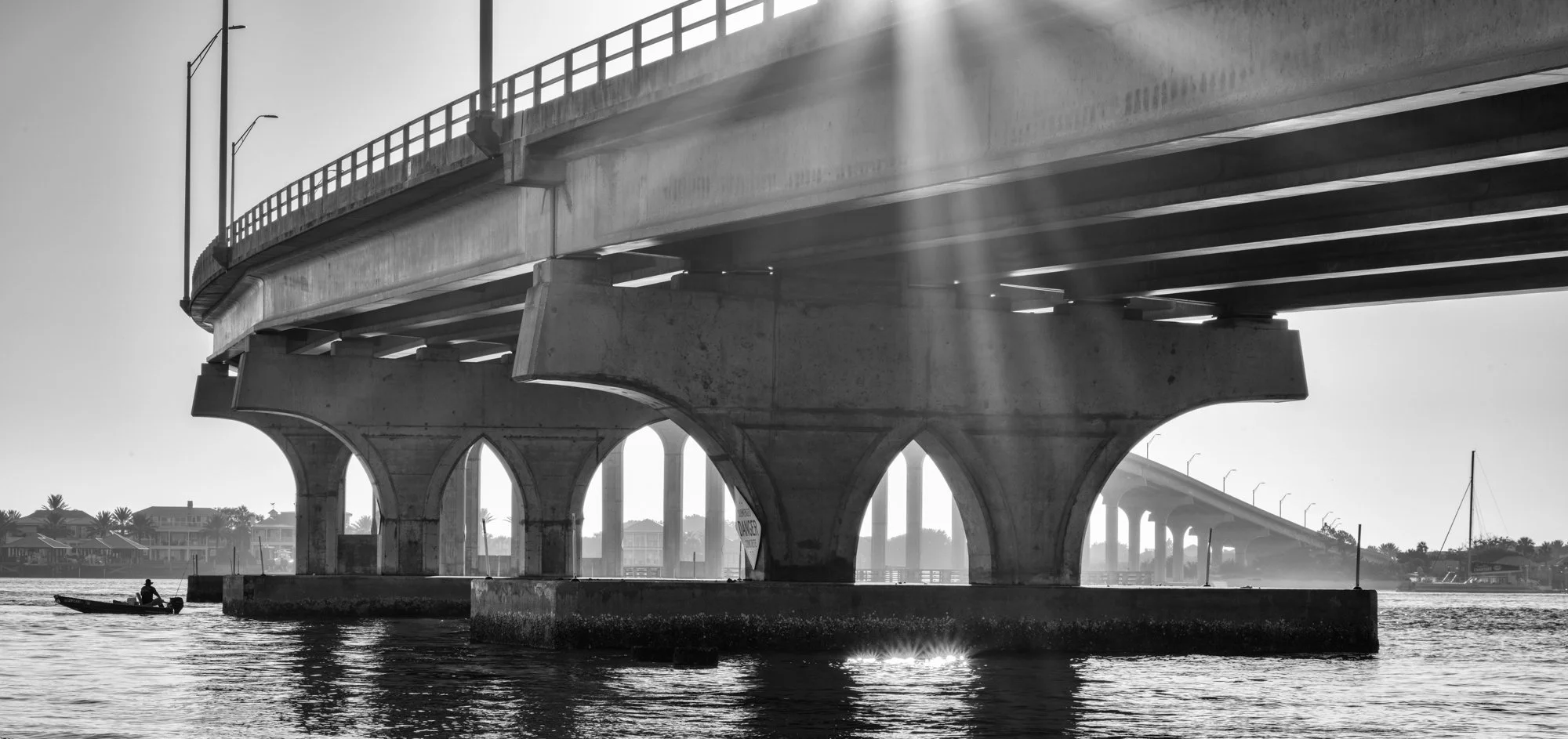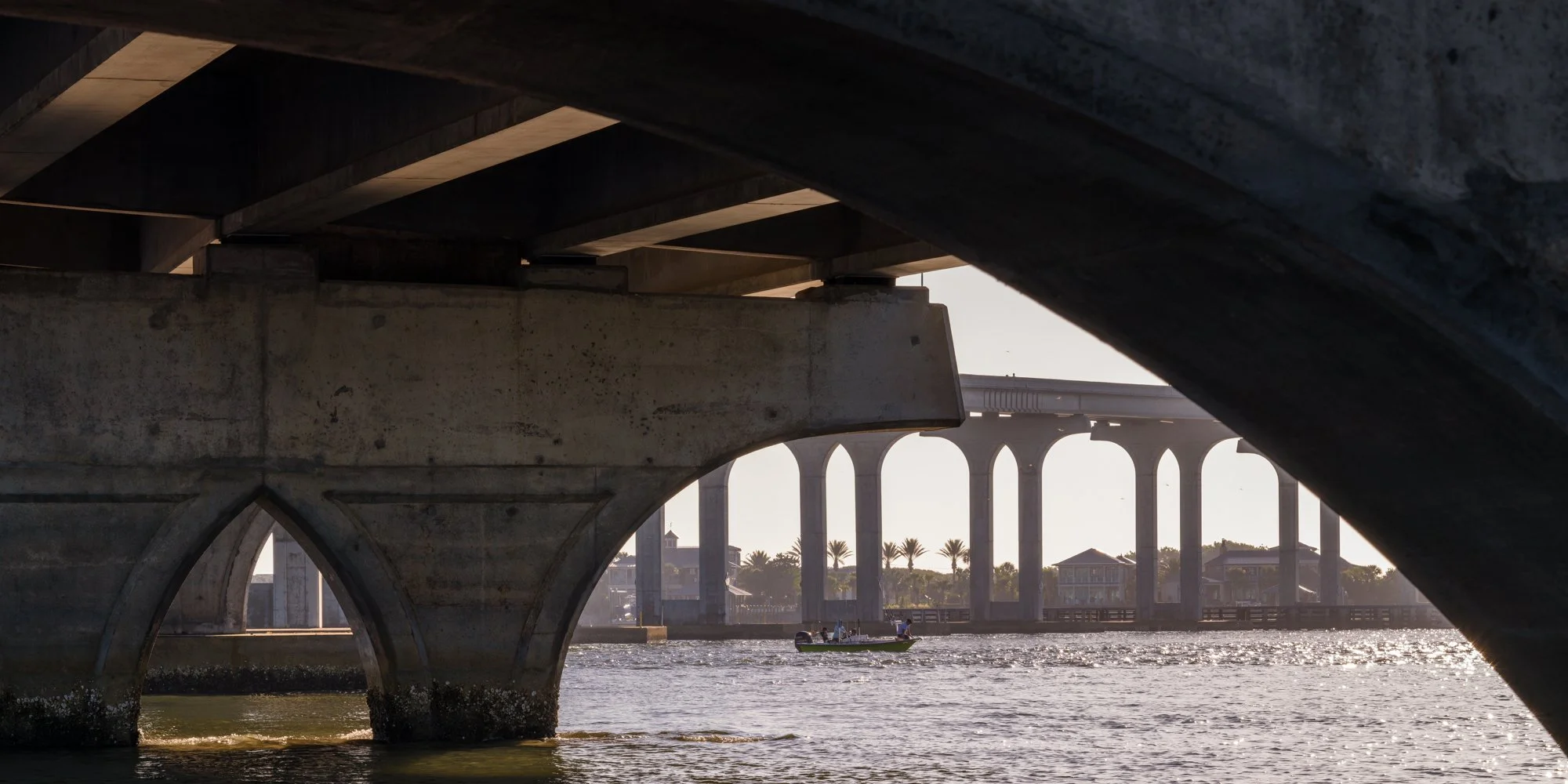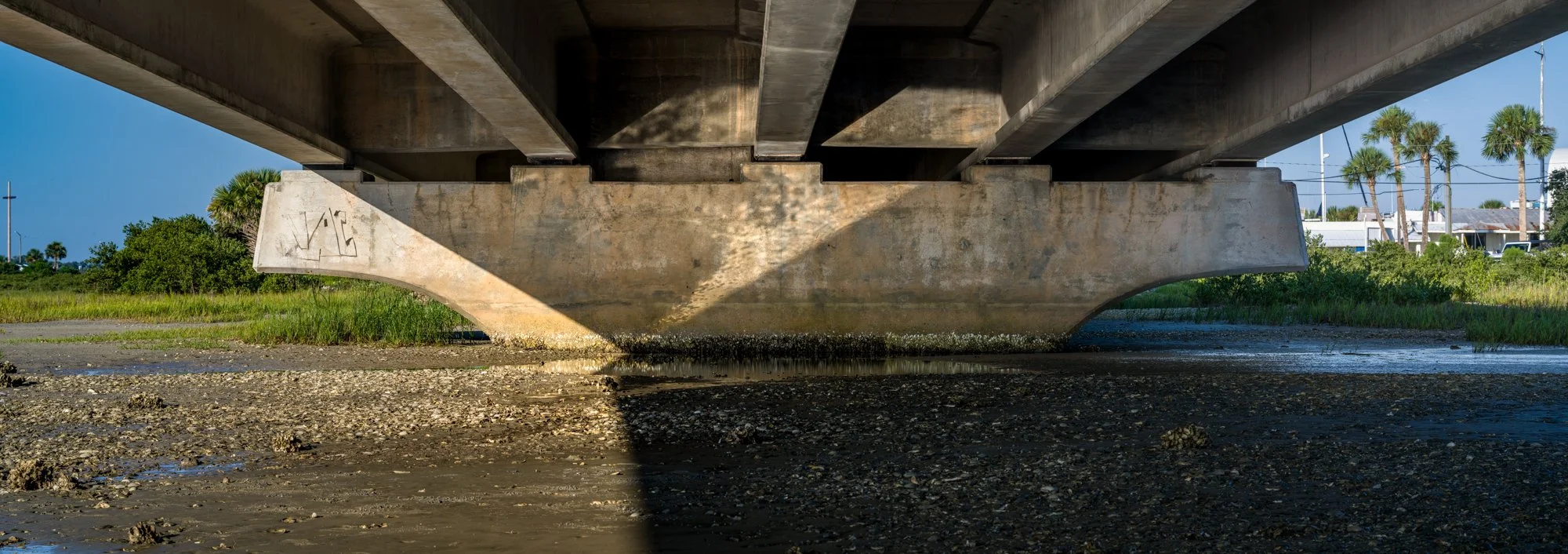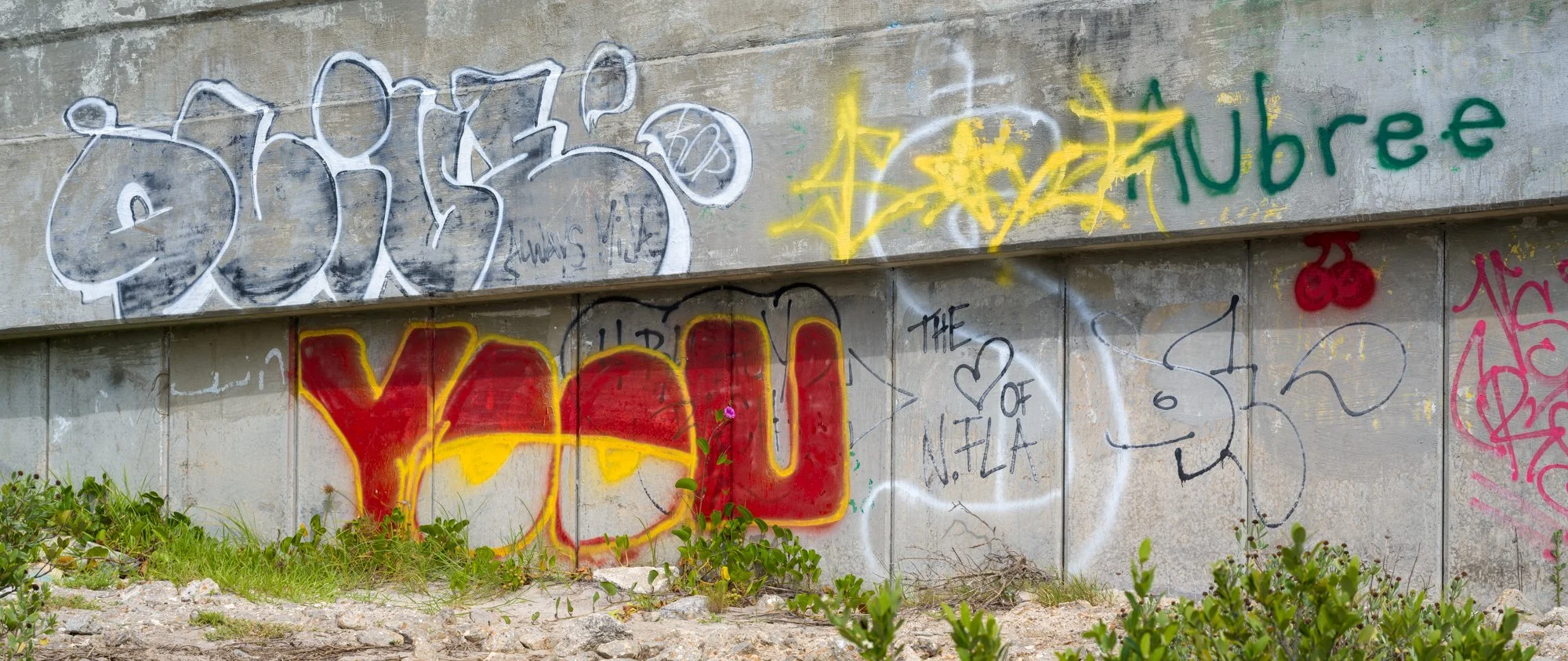Bridge to Vilano and World Beneath.
A wooden swing bridge once swayed here, built by the Ursina family around 1890, buffeted by southerly wind in summers and northerly wind in winters. Passengers would disembark the Jacksonville, St Augustine, and Halifax Railway line and cross the North River to reach the pristine beaches of Vilano. As they walked or rode in horse carriages, the expansive vistas would gradually come into view on each side of the bridge.
Casting their gaze southwards, they would spot the prominent Lighthouse across the water and St Augustine's distinctive skyline with the fort and Spanish-inspired architecture of buildings that Flagler had built. Ahead lay views more enchanting still. At the apex of the bridge, visitors would catch the first glimpse of the glorious beaches ahead. A white strip of sandy beach butted against the blue Atlantic flowing to a cloud-studded cerulean sky.
Those visitors have returned their borrowed stardust since then. Oyster clusters cling to decaying stumps, the remnants of a previous bridge, and peak out of the water depending on the tides. Expansive vistas and vast expanse of a narrow strip of white sandy beach and flowing Atlantic remain, and so does their allure.
The area still attracts countless visitors. Where the residents and visitors once rode in carriages pulled by horses, now ride their cars, motorcycles, and bicycles, or walk, jog, or run over the bridge, made possible by the third iteration of the bridge. This newest fixed bridge, named after Francis and Mary Ursina, replaced Heckscher's bridge, which was once new on March 31, 1927. Sailboats as tall as 65 feet can pass under this SR A1A/Vilano bridge. It's 108 feet of horizontal clearance and concrete pillars, arches, and shade shelters fishermen as they cast their lures. Terns fly by, egrets lounge, and laughing gulls abound. Some row their dinghies to reach the piers, tie their boats, and climb onto the concrete foundations to fish. Some sneak in and decorate or deface the structures with graffiti.
Humans build bridges, literal and metaphorical, to meet critical needs—crossing bodies of water or a gorge—or prove a point like Da Vinci's conceptual bridge that he never built, yet remains influential and popular. To construct a bridge of any kind is no minor task. Invisible foundations on the waterbed support the piers and arches. Their rings and spandrel walls bear the burden of all walking, running, or driving on the paved surface of the bridge laid over the deck-slabs that expand and contract at their expansion joints. Arches adroitly transfer the load through compression down through the piers to the foundation, making it both strong and durable for spanning water bodies like Tolomato River. People, ideas, and entities that connect disparate individuals and groups, concepts, and communities, too, need strong foundations and the weight of responsibilities equitably distributed.
Standing on the bridge, then meandering below it, I imagined Longfellow, who once stood over a different bridge in a different locale, absentmindedly gazing below into the water, fragments of verses not yet formed into stanzas. He probably hurried—better to capture all his thoughts while they were clear in his head.
And I think how many thousands
Of care-encumbered men,
Each bearing his burden of sorrow,
Have crossed the bridge since then.
I see the long procession
Still passing to and fro,
The young heart hot and restless,
And the old subdued and slow!
I, too, wonder how many must have come and gone before me and will come after my stardust, and that of everyone I know will have been returned to the collective unconscious. I wonder if I had ridden the carriage with my family or friends, what would I have told them? What detail would have stood out to me? The bridge and I, along with others, will grow old. Rising temperatures will warm the ocean, and resultant humidity will empower the hurricanes. The bridge, like the future inhabitants on each end, will have to endure the beatings of the lapping waves, storm tides, and withstand gales and blistering hurricane winds. The world below and around it will change. Future residents may not even need the bridge by then or may require a replacement.
I wonder, did the buggy-riding visitors crossing the Tolomato River on the older two bridges think about the bridge of their future and its users that we now have? Hard to know. But, for sure, had they not come and kept coming, the Ursinas family likely would not have invested in building the new bridge. Human imagination allows us to imagine a future state, communicate with others to raise funds and interest to realize that vision. Had Ursinas not imagined a future and had the residents not bought into that vision, would we have Vilano and its bridge? Can the collective imagination of our future create a narrative of a future that wills itself into existence? If such is the case, should we not imagine a beautiful future? A future where seas will not warm, the birds species will not have suffered the fate of their now extinct kin, where the white sandy peninsula will be jutting the blue Atlantic and not submerged beneath it, where families will fish together sitting in their future versions of dinghies, where the diving brown pelicans, terns, double crested cormorants, and anhingas will still be able to catch the fish. One can dream. May our dreams not devolve into nightmares.
And forever and forever,
As long as the river flows,
As long as the heart has passions,
As long as life has woes;
The moon and its broken reflection
And its shadows shall appear,
As the symbol of love in heaven,
And its wavering image here.


